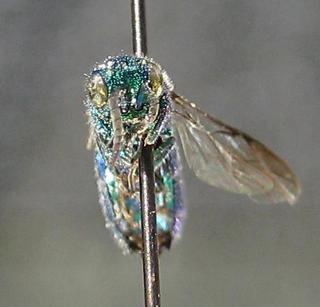
Native Bee Inventory and Monitoring Lab; Photographer: Erika Tucker · 1
Chrysis antennalis, face |
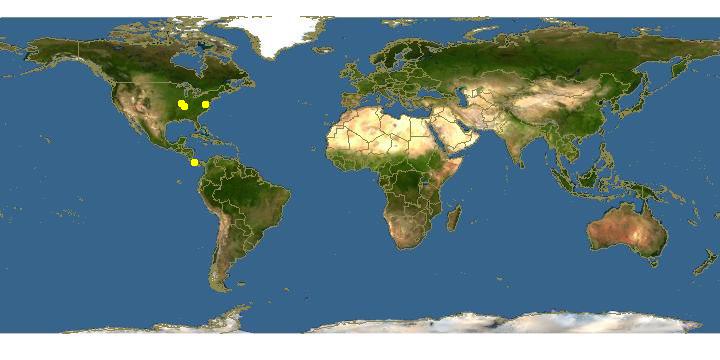
Click on map for details about points.
|
80x5 -
240x3 -
240x4 -
320x1 -
320x2 -
320x3 -
640x1 -
640x2
Set display option above.
Click on
images to enlarge. |
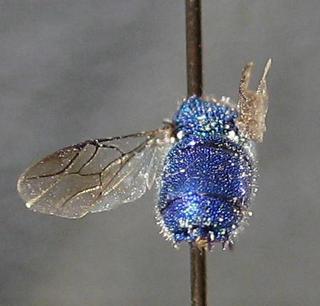
Native Bee Inventory and Monitoring Lab; Photographer: Erika Tucker · 1
Chrysis antennalis, tail |
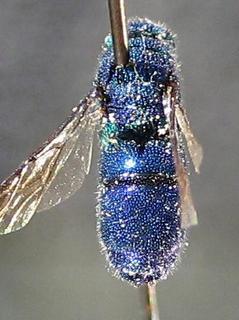
Native Bee Inventory and Monitoring Lab; Photographer: Erika Tucker · 1
Chrysis antennalis, top |
|

Native Bee Inventory and Monitoring Lab; Photographer: Erika Tucker · 1
Chrysis antennalis |
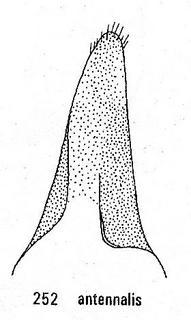
R. M. Bohart L. S. Kimsey, 1982 · 1
Chrysis antennalis, male paramere |
|
Overview |
Taken from:
R. M. Bohart and L. S. Kimsey. 1982. A Synopsis of the Chrysididae in America North of Mexico.
Chrysis antennalis Mocsary
(Fig. 252)
Chrysis antennalis Mocsary 1912:564. biotype male, Presidio, Chihuahua, Mexico (Budapest).
Chrysis stenodyneri Krombein 1958:151. Holotype female, Kill Devil Hills, Dare Co., North Carolina (USNM). New synonymy.
Discussion: This species is fairly common in the eastern states and the southwest. Typical antennalis have the double edge of T-III broader than in typical stenodyneri. Also, the latter has much darker wings on the average. It seems worthwhile to recognize a southwestern subspecies, antennalis s. s., in Nevada, Arizona, New Mexico, Texas and northwestern states of Mexico. C. antennalis stenodyneri would be transcontinental but more northern in the west. Its range in the east would extend south into Central America to Panama. No differences in male genitalia have been observed (fig. 252), and Californian material is hard to segregate into subspecies.
Hosts: (recorded for stenodyneri): Stenodynerus histrionalis (Robertson), S. krombeini Bohart, S. lineatifrons Bohart, Parancistrocerus histrio Lepeletier (Krombein 1958, 1967). Hosts (of antennalis s. s.): Microdynerus bakerianus (Cameron) (as stenodyneri, Parker 1970:242), Ancistrocerus simulator Cameron, Odynerus erythrogaster Bohart (personal communication, F. D. Parker). All hosts were in wooden trap nests or hollow stems.
Material examined: 64 males including type, 50 females, assigned to antennalis 106 males, 159 females including type, assigned to stenodyneri.
Distribution: As indicated in the discussion above. Northern limits of the range (stenodyneri) are NEW HAMPSHIRE: Durham; WISCONSIN: Polk Co.; NEBRASKA: Lincoln; MONTANA: Florence; IDAHO: Mayfield; BRITISH COLUMBIA: Robson.
|
|
| Supported by | |
Updated: 2024-04-26 21:08:43 gmt
|